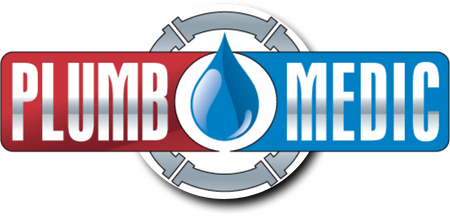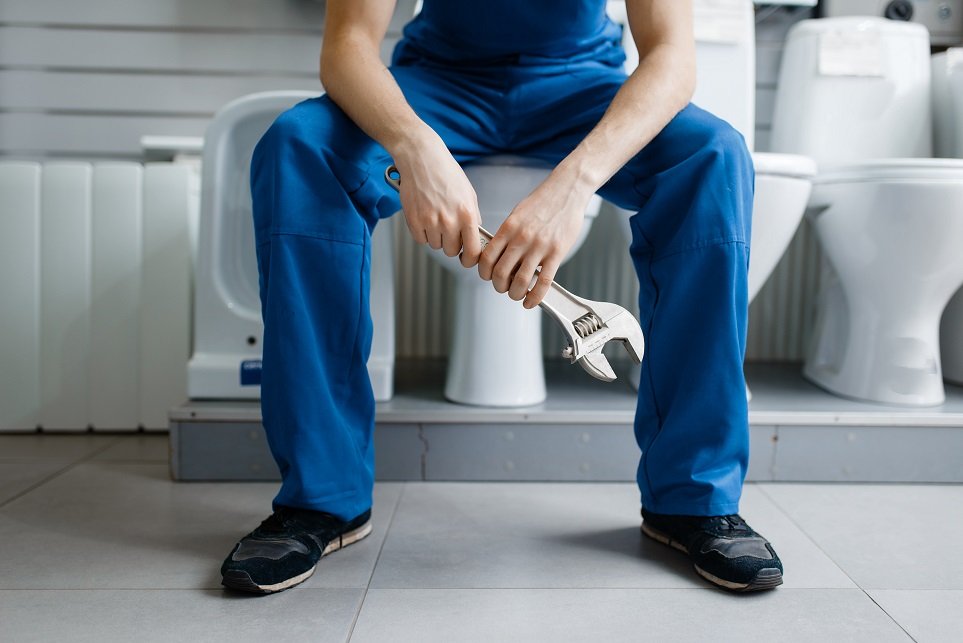There are some plumbing problems in this world that people just don’t want to have to deal with, and a clogged toilet is one of them. Not only is it the biggest nuisance, but it can feel a little embarrassing.
The first instinct might be to use a cup plunger that is already in your bathroom, but these aren’t specifically designed to unclog your toilet—unlike flange plungers, which are! You may have used this in the past with continuous effort and no real result except having to call the local plumber anyway.
By replacing your cup plunger with a flange plunger, you’re more likely to unclog your toilet before admitting defeat and hiring a plumber. Here are tips on how to properly use this tool to unclog your toilet.
Ditch the cup plunger for a flange plunger
The first thing to do is to use the right plunger. A flange is an external rim that helps the plunger attach to the toilet more securely, a design that was specifically conceptualized to help unclog a toilet effectively.
When plunging a toilet, insert the flange directly into the toilet’s drain hole to ensure a tighter seal and a better suction. In many cases, this will help clear up the blockage in your toilet.
Protect the surrounding area
Depending on how vigorously you have to do it, plunging can get quite messy. Make sure to lay plastic wrap or towels down for a hassle-free clean-up after you’re done. Move things out of the way as well to avoid knocking them over.
While not necessary, it’s recommended that you also wear rubber boots to keep from slipping and sliding on the wet floor, especially if you pull the plunger out after it’s been stuck (which tends to happen, mind you).
Have the right amount of water in the bowl
In order for the plunging to be effective, the toilet bowl should be filled up to about halfway. You should be able to submerge the plunger cup fully before starting. As you work to unclog your toilet, water may spill out of the bowl, so it’s a good idea to have a bucket of water ready next to you to add or remove water as needed.
Fit the flange and cup into and over the drain
Inserting the flange straight down won’t give it the best position for effective suctioning, so try placing it at an angle first and then straightening it up. It should fit snugly into the bowl’s drain before you fit the plunge’s cup and create a seal, letting water from the bowl fill the cup. This will help create the suction pressure needed to unclog the toilet.
Test the seal first by depressing the plunger slowly and bringing it back up the same way. The cup should stay firmly attached; otherwise, place the flange and the cup over the toilet drain and try again.
Plunge several times
Plunge firmly and repeatedly while maintaining the seal at all times for about 30 seconds, then check the water level in the toilet bowl. If nearly all the water has drained from the bowl and you hear a gurgling sound from the drain, you have successfully unclogged your toilet. If it hasn’t drained, then you can repeat the process a few more times.
Do a test to confirm that the clog is gone
Remove the tank lid and then test your flush. If the bowl starts filling with water without a sign of stopping, it means you haven’t cleared the clog and must repeat the plunging process. Shut the toilet’s flapper if this happens to prevent your bowl from overflowing.
If the toilet bowl doesn’t unclog after several times of trying, then it may be time to get in touch with one of the top plumbers that you can find in your area.
Unclog Your Toilet with Plumb Medic LLC
Unclogging a toilet can be messy and tricky business, but it can feel like a real accomplishment if you can get it right. Remember that having the right tools is just as important as doing the job itself properly. While cup plungers work fairly well, they aren’t like flange plungers that are specifically designed for unclogging your toilet. If they don’t get the job done, a plumber definitely can!
The best-rated plumbing services cover all the plumbing needs in your home. Here at Plumb Medic, our plumbers in Marietta and North Atlanta can provide services for toilets, water heaters, water line repairs, showers and faucets, and more. To view our full list of services, visit our website today.


Recent Comments